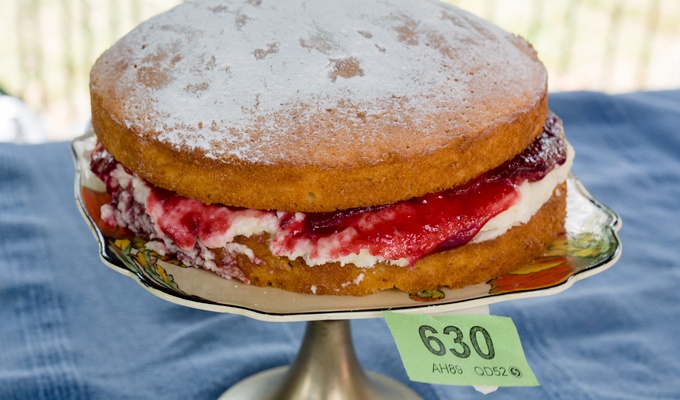The Victoria sponge, also known as the Victoria sandwich cake, was named after Queen Victoria, who was known to enjoy the small cakes with her afternoon tea. The version Queen Victoria ate would have been filled with jam alone, but modern versions often include cream. The top of the cake is not iced or decorated apart from a dusting of powdered sugar. The recipe evolved from the classic pound cake made with equal proportions of flour, fat, sugar and eggs.
The invention of baking powder in 1843 by English food manufacturer Alfred Bird allowed the cake to rise higher than was previously possible. Cookery author Felicity Cloake writes that this invention "was celebrated with a patriotic cake"—the Victoria sponge. According to Alysa Levene of Oxford Brookes University the term "sponge" is used "erroneously" for the Victoria Sandwich cake:
The pound cake became popular in Britain in the eighteenth century as cake moved away from its heavy, fruity incarnations toward something lighter and more golden, eventually becoming the iconic Victoria sandwich cake (also known – erroneously – as a Victoria sponge)
A Victoria sponge is made using one of two methods. The traditional method involves creaming caster sugar with fat (usually butter), mixing thoroughly with beaten egg, then folding flour and raising agent into the mixture. The modern method, using an electric mixer or food processor, involves simply whisking all the ingredients together until creamy. Additionally, the modern method typically uses an extra raising agent, and some recipes call for an extra-soft butter or margarine. This basic "cake" mixture has been made into a wide variety of treats and puddings, including cupcakes, chocolate cake, and Eve's pudding.
